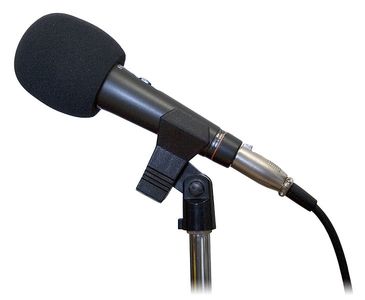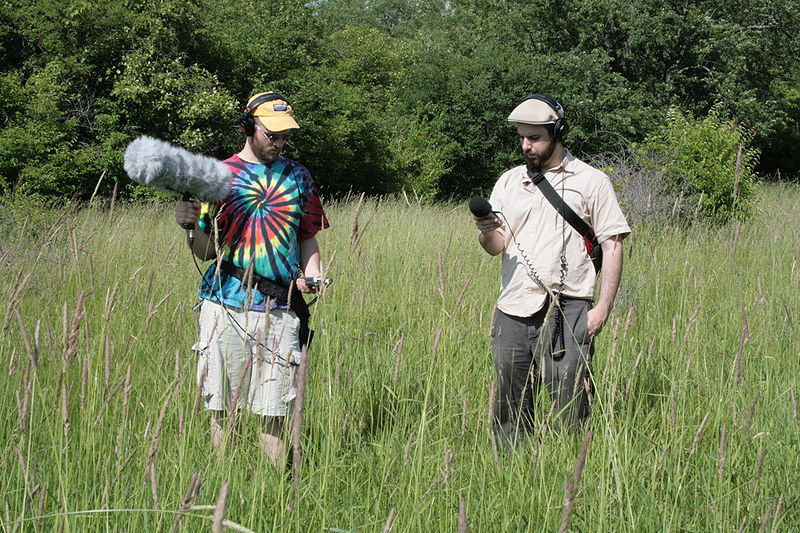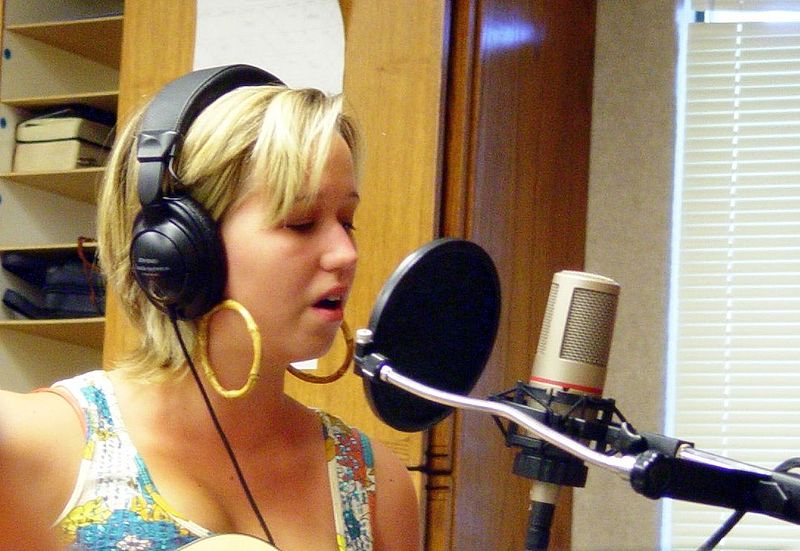| Vocademy |
Wind and Pop Shielding
Foam windscreen
|
|
|
A microphone with a foam windscreen |
Microphone covers are often made of soft open-cell polyester or polyurethane foam because of the inexpensive, disposable nature of the foam. Optional windscreens are often available from the manufacturer and third parties.
Blimp / muff / dead cat
|
|
|
Using a microphone blimp |
Blimps are large, hollow windscreens used to surround microphones for outdoor location audio, such as nature recording, electronic news gathering, and for film and video shoots. They can cut wind noise by as much as 25 dB, especially low-frequency noise. The blimp is essentially a hollow cage or basket with acoustically transparent material stretched over the outer frame. The blimp works by creating a volume of still air around the microphone. The microphone is often further isolated from the blimp by an elastic suspension inside the basket. This reduces wind vibrations and handling noise transmitted from the cage. To extend the range of wind speed conditions in which the blimp remains effective, many have the option of a secondary cover over the outer shell. This is usually an acoustically transparent, synthetic fur material with long, soft hairs. Common and slang names for this include "dead cat" or "windmuff." The hairs deaden the noise caused by the shock of wind hitting the blimp. A synthetic fur cover can reduce wind noise by an additional 10 dB.
Pop shield
|
|
|
A vocalist using a pop shield[1]. |
Pop filters or pop screens are used in controlled studio environments to minimize plosives when recording. A typical pop filter is composed of one or more layers of acoustically transparent gauze-like material, such as woven nylon stretched over a circular frame and a clamp and a flexible mounting bracket to attach to the microphone stand. The pop shield is placed between the vocalist and the microphone. The closer a vocalist brings his or her lips to the microphone, the greater the requirement for a Pop filter. Singers can be trained either to soften their plosives or direct the air blast away from the microphone, in which cases they don't need a pop filter.
Microphones - Practical Application
| 1 | Photo credit: https://commons.wikimedia.org/wiki/File:Pop_filter.jpg |
| Vocademy |


